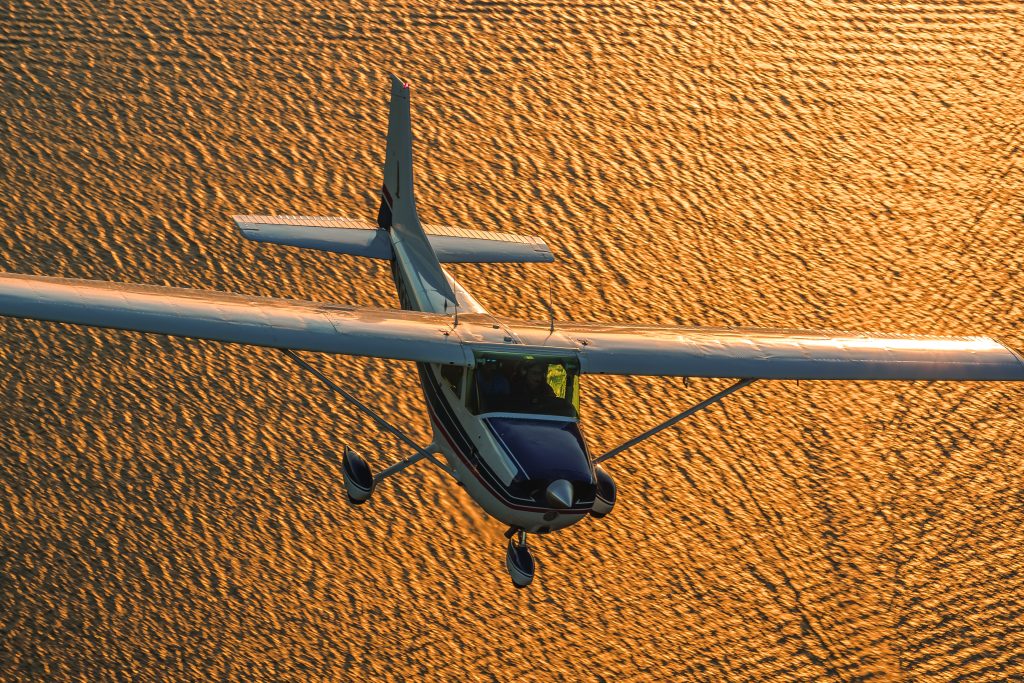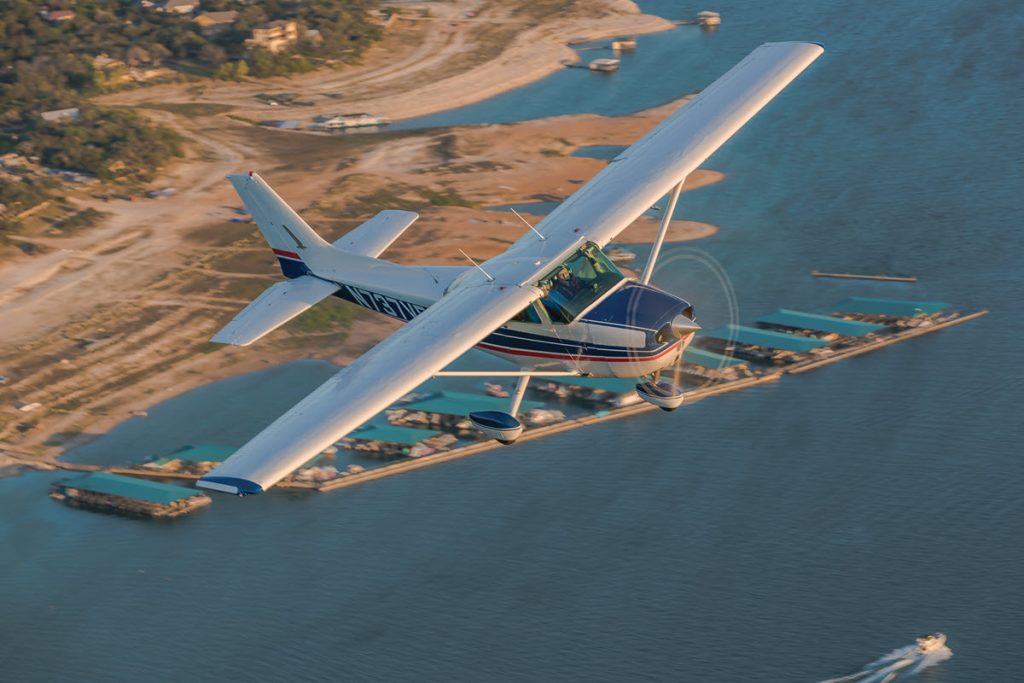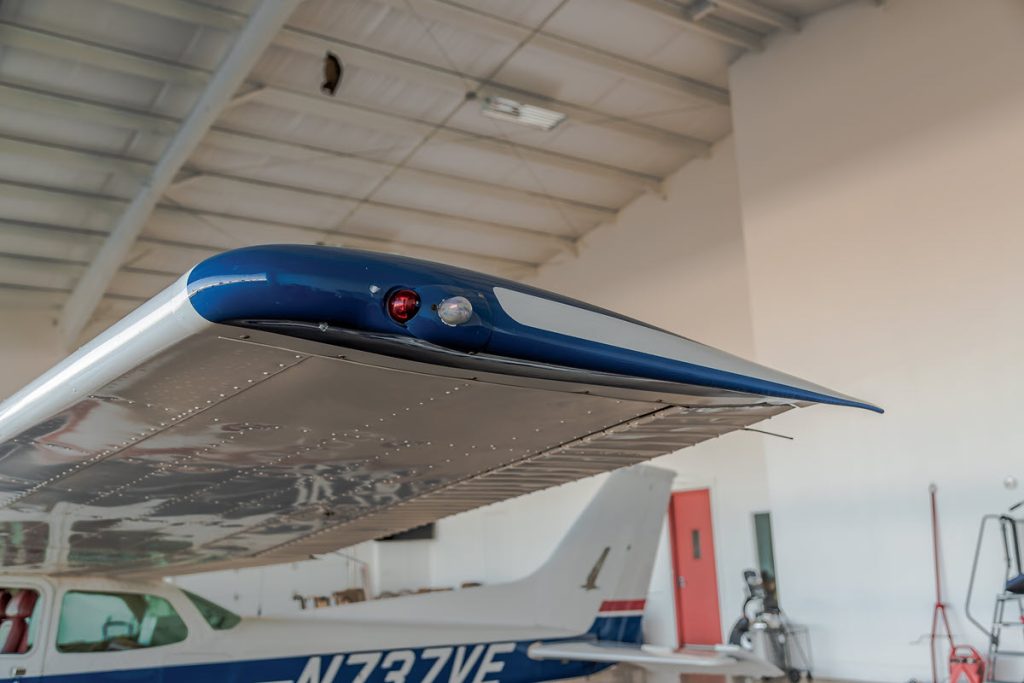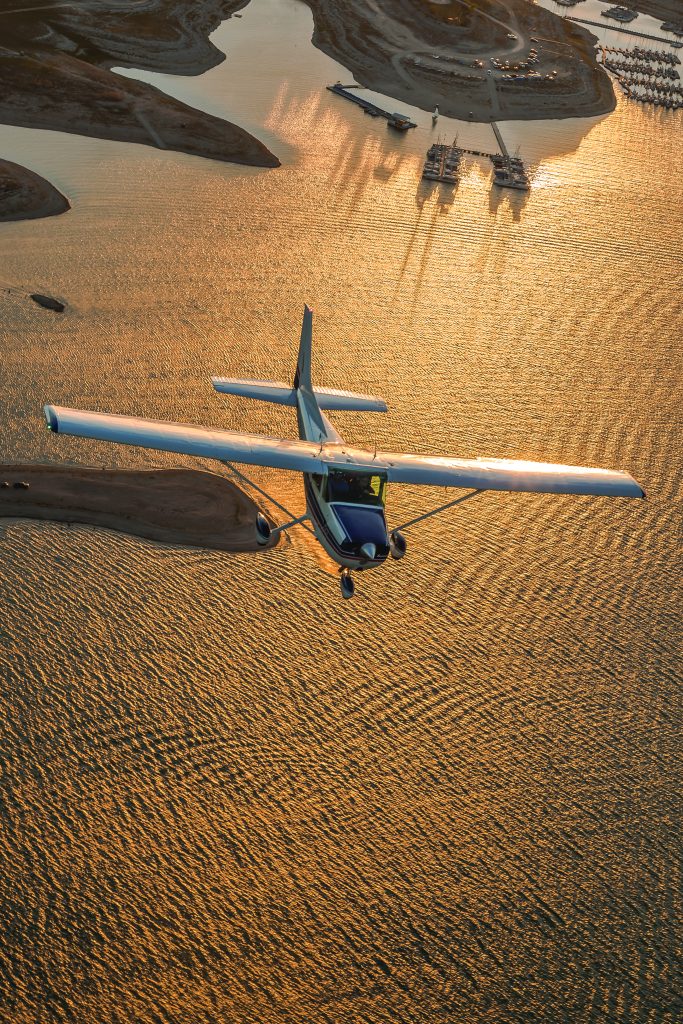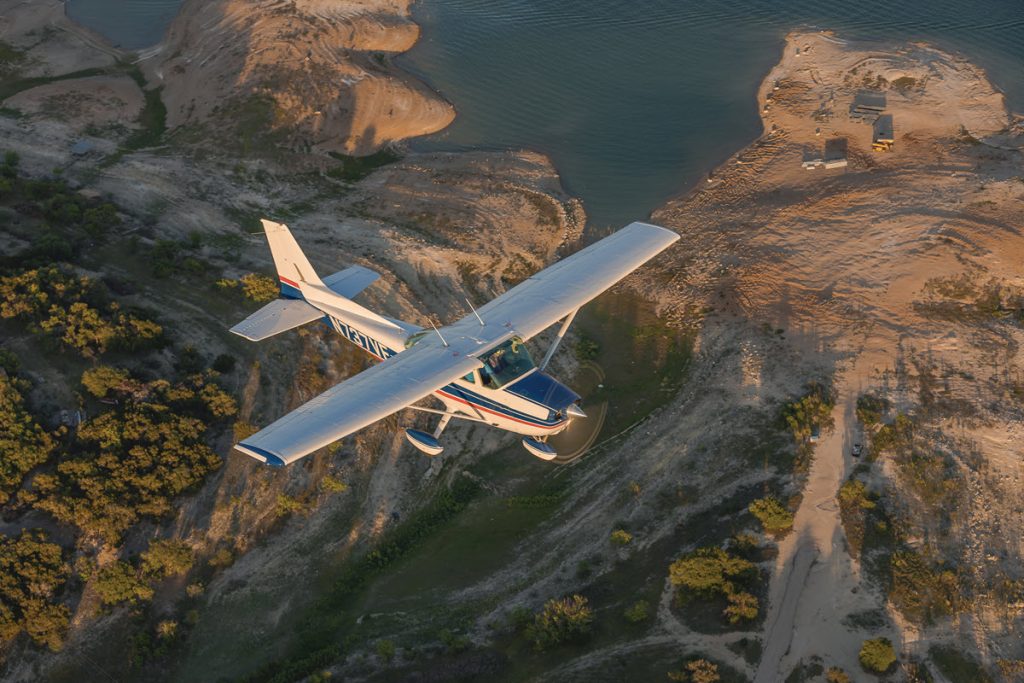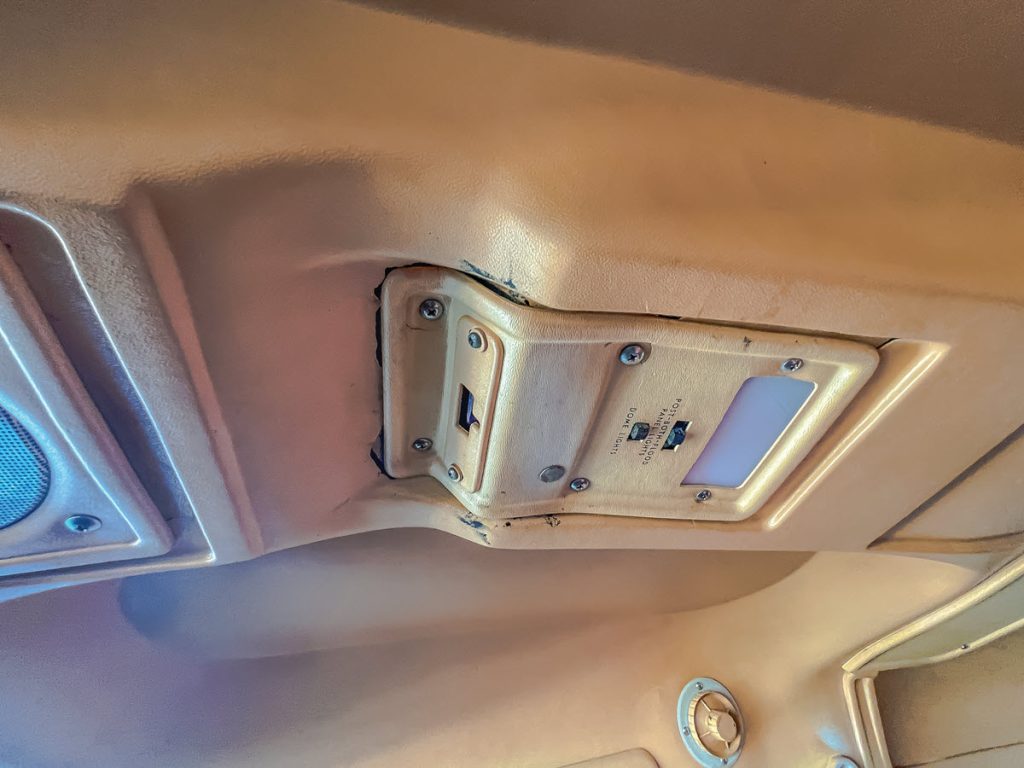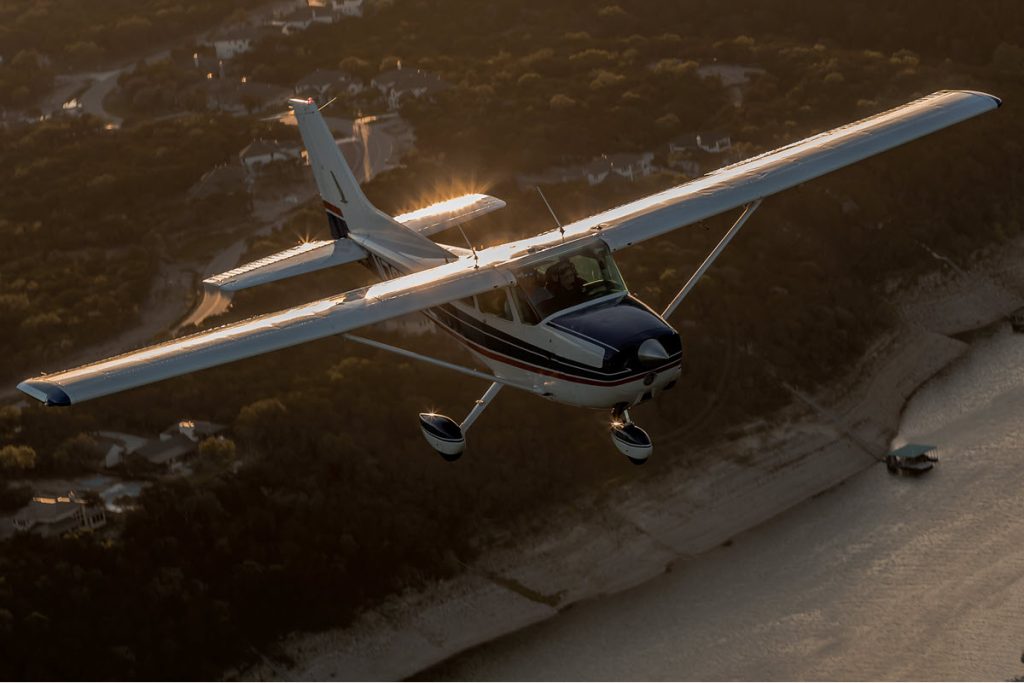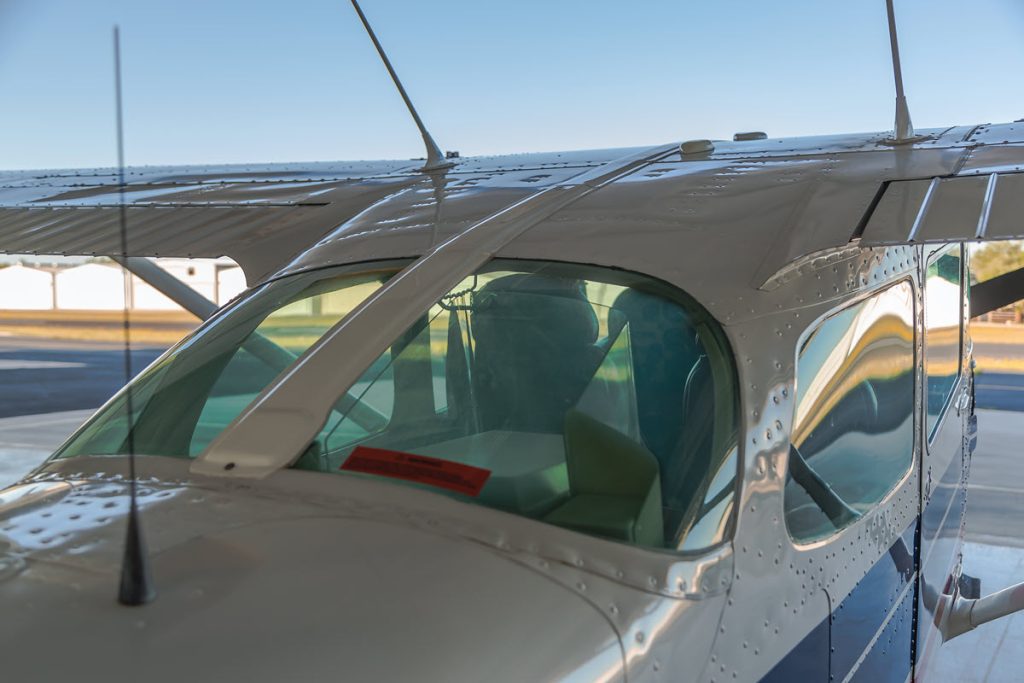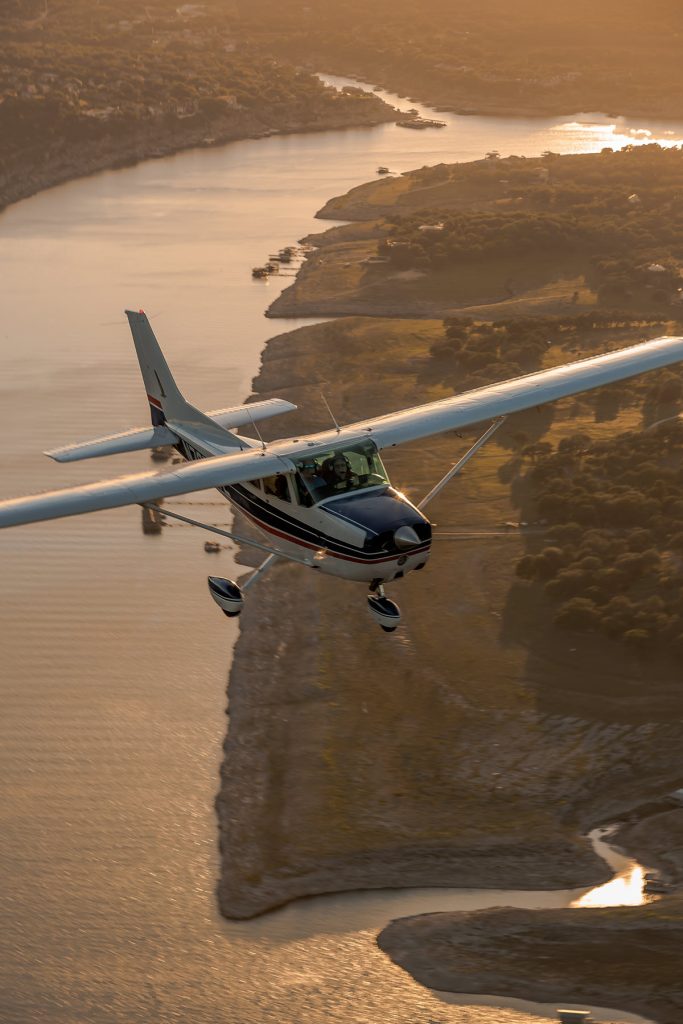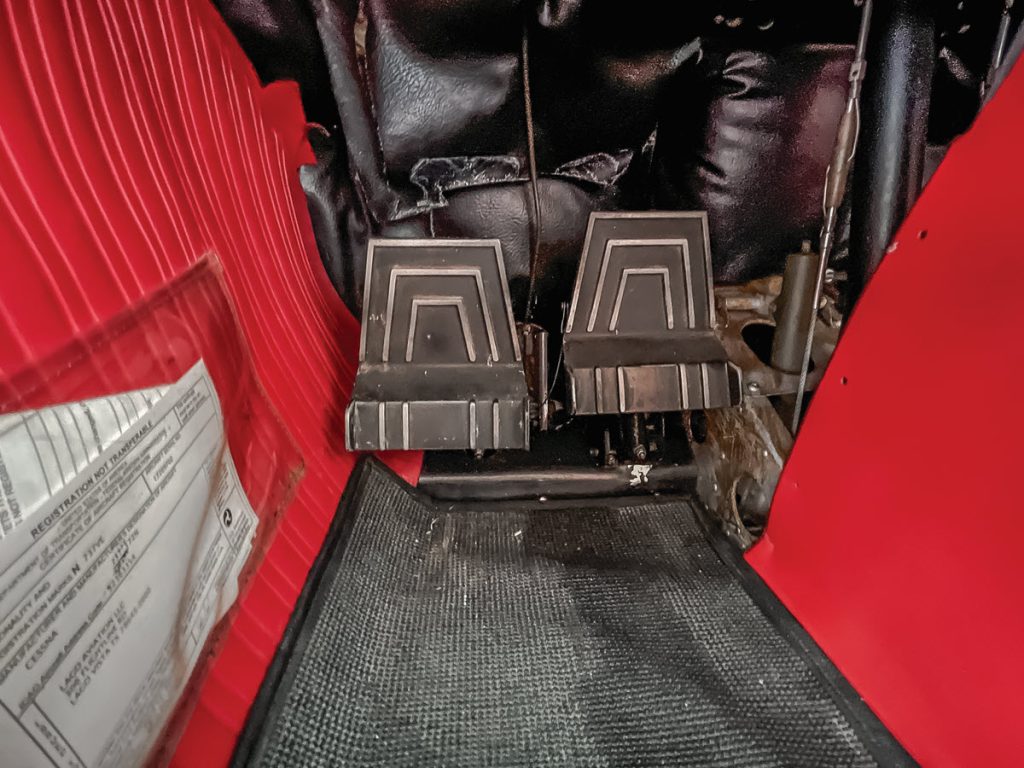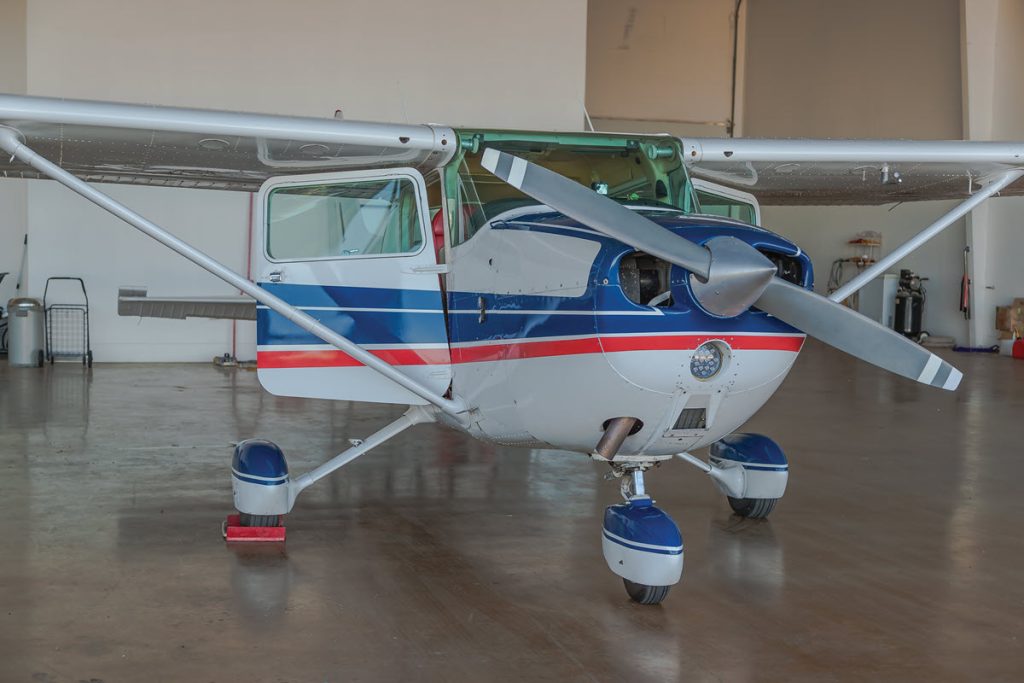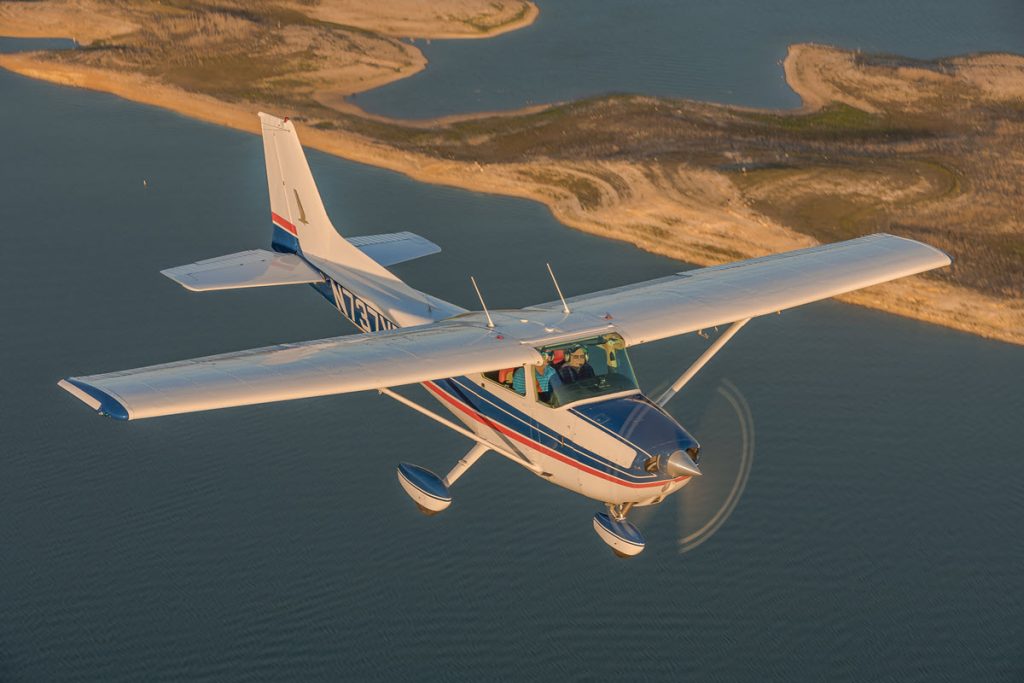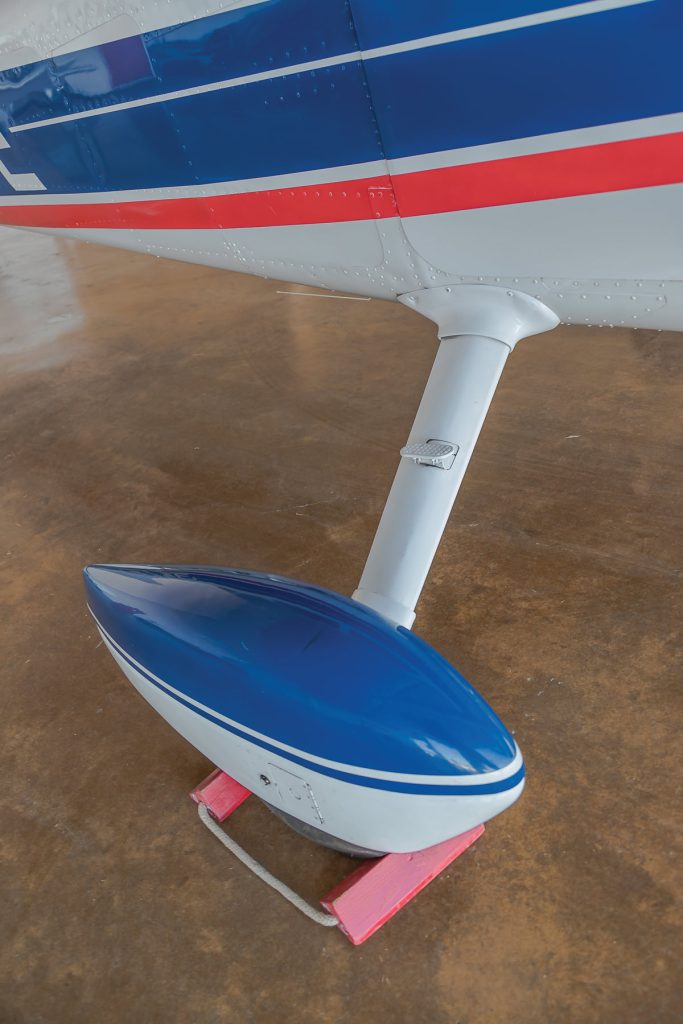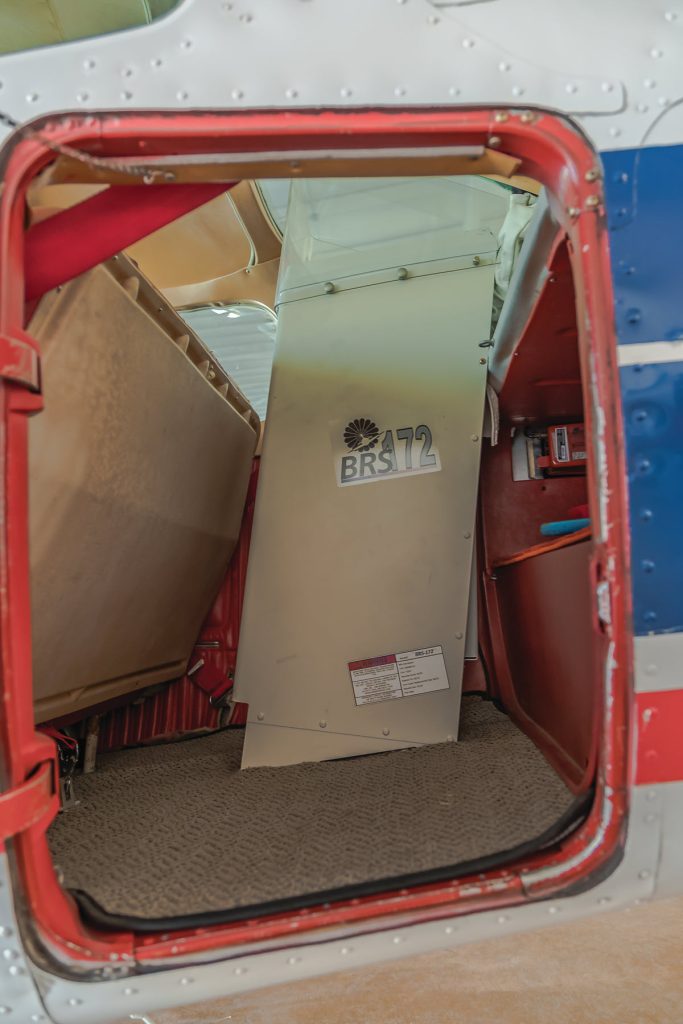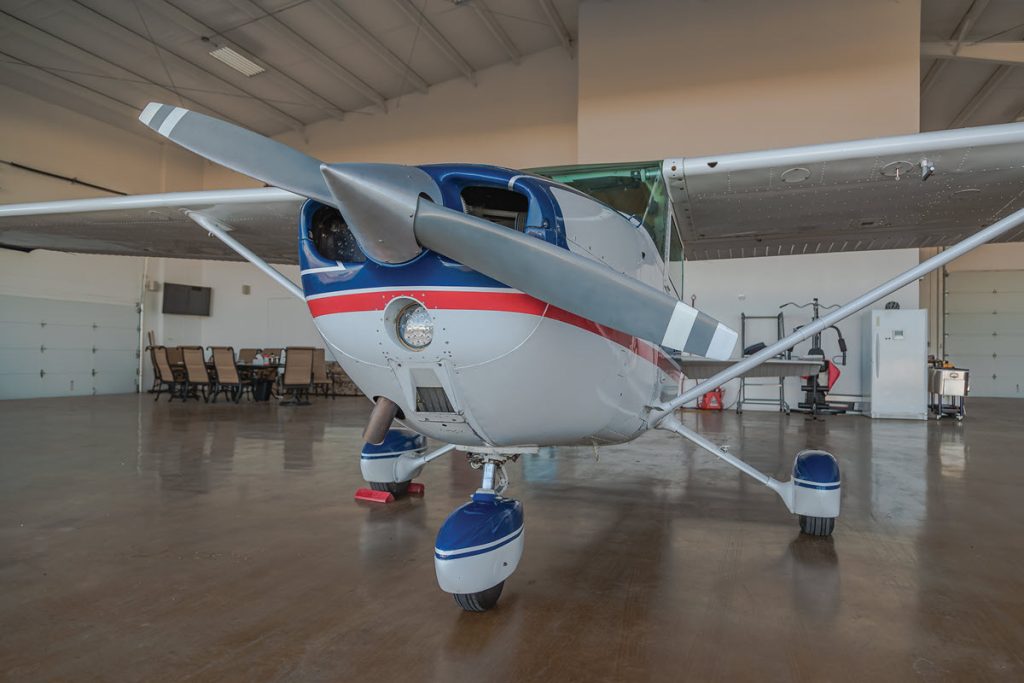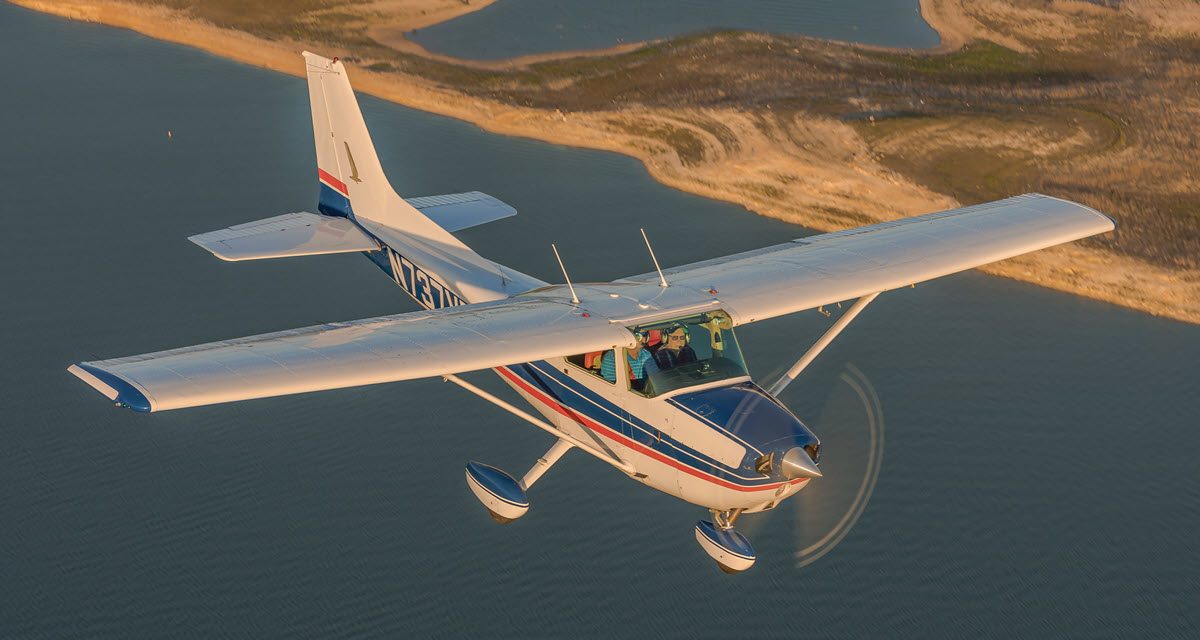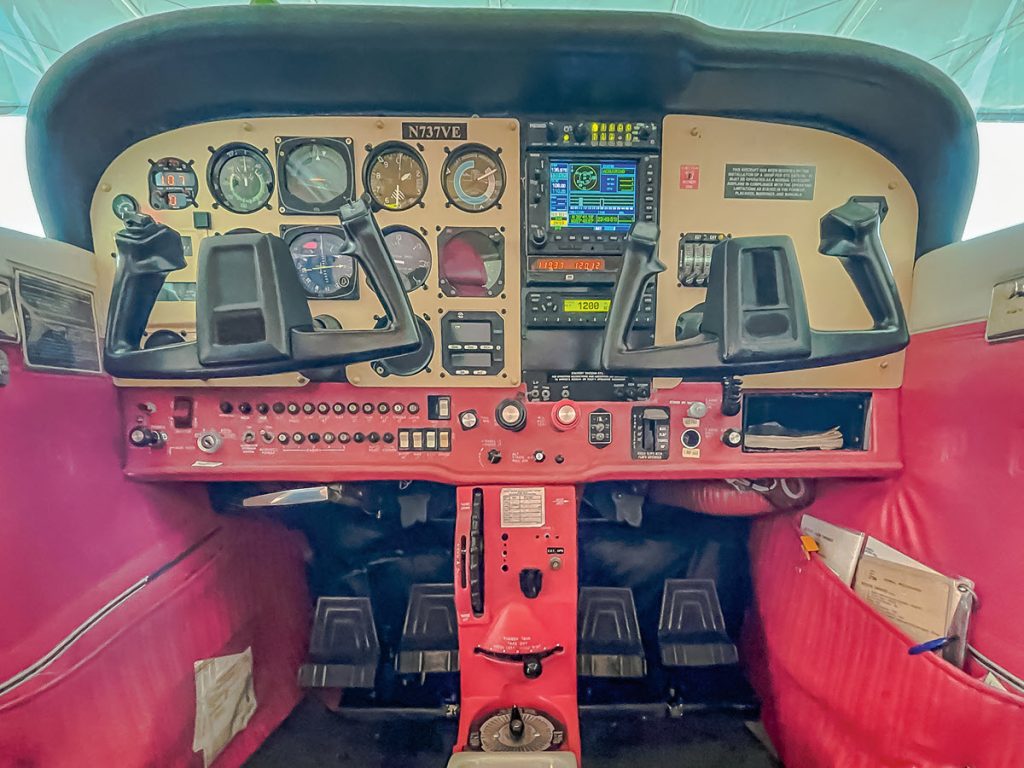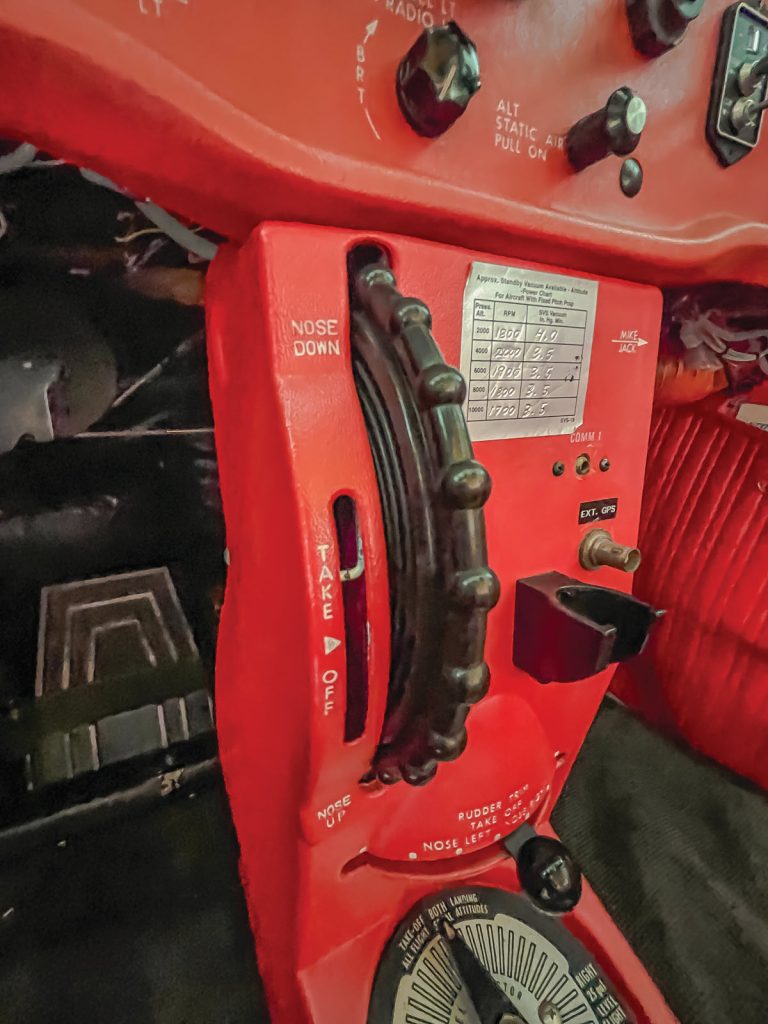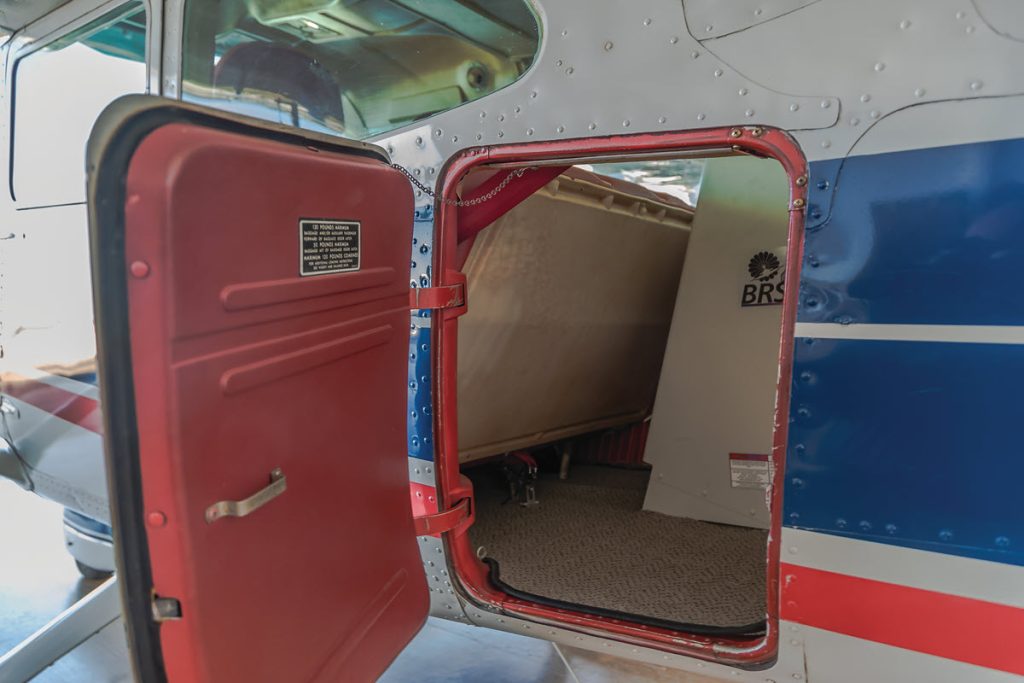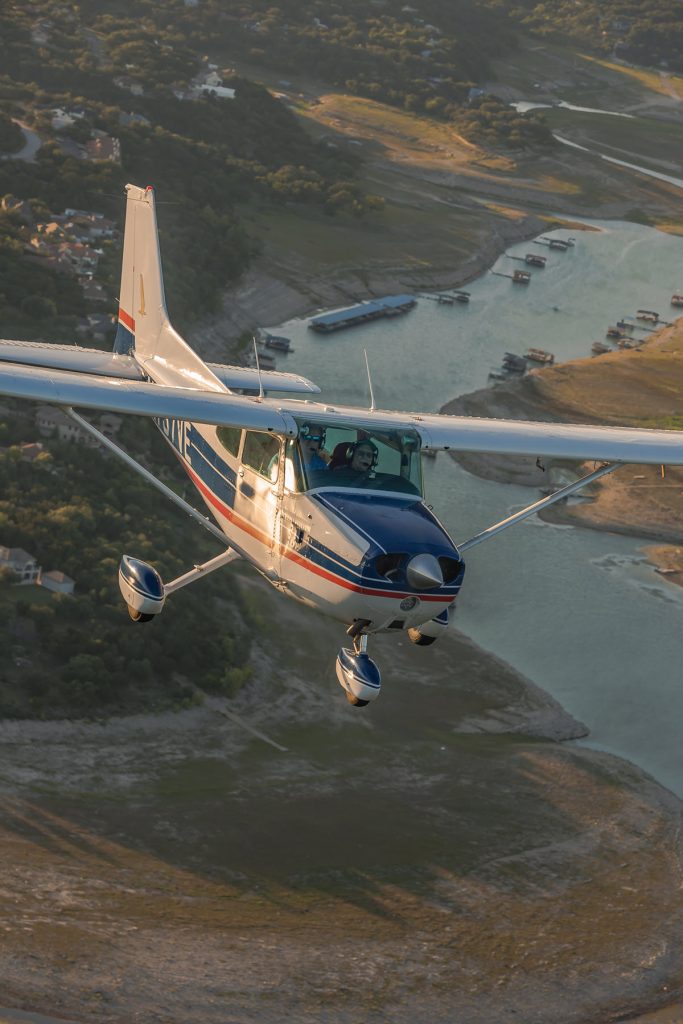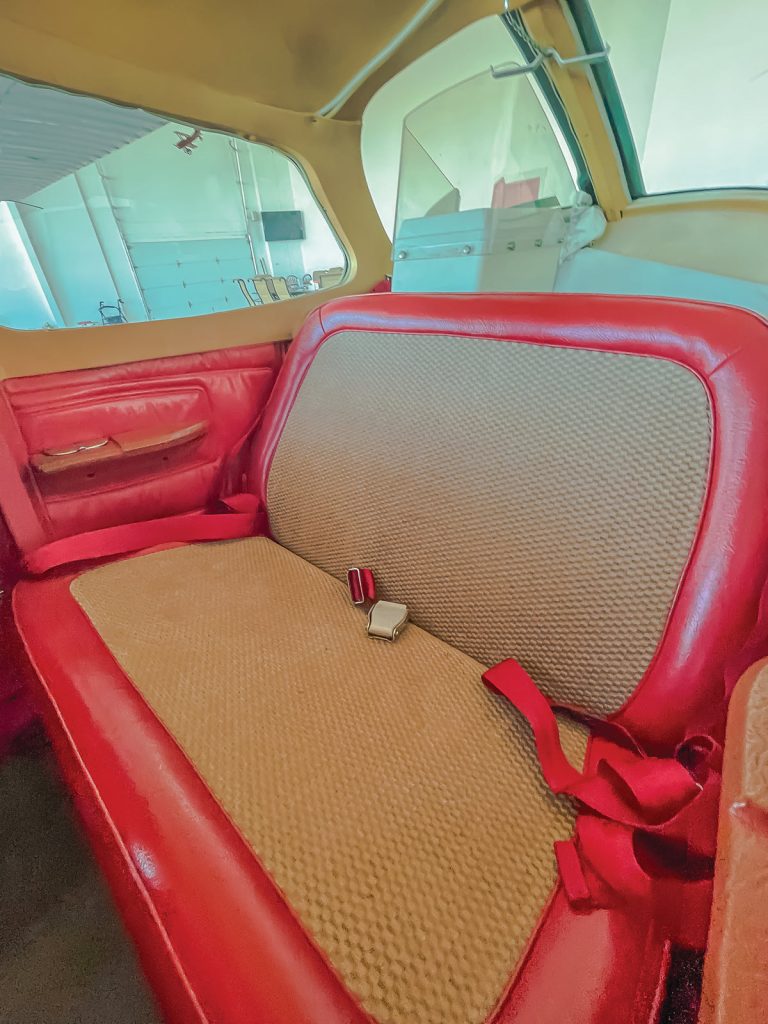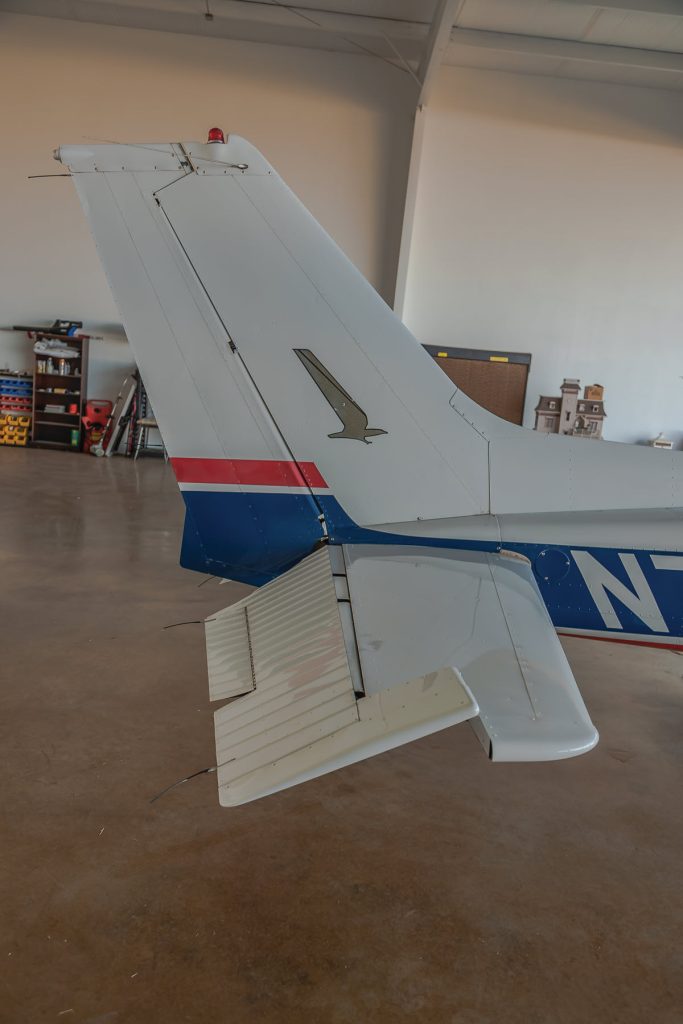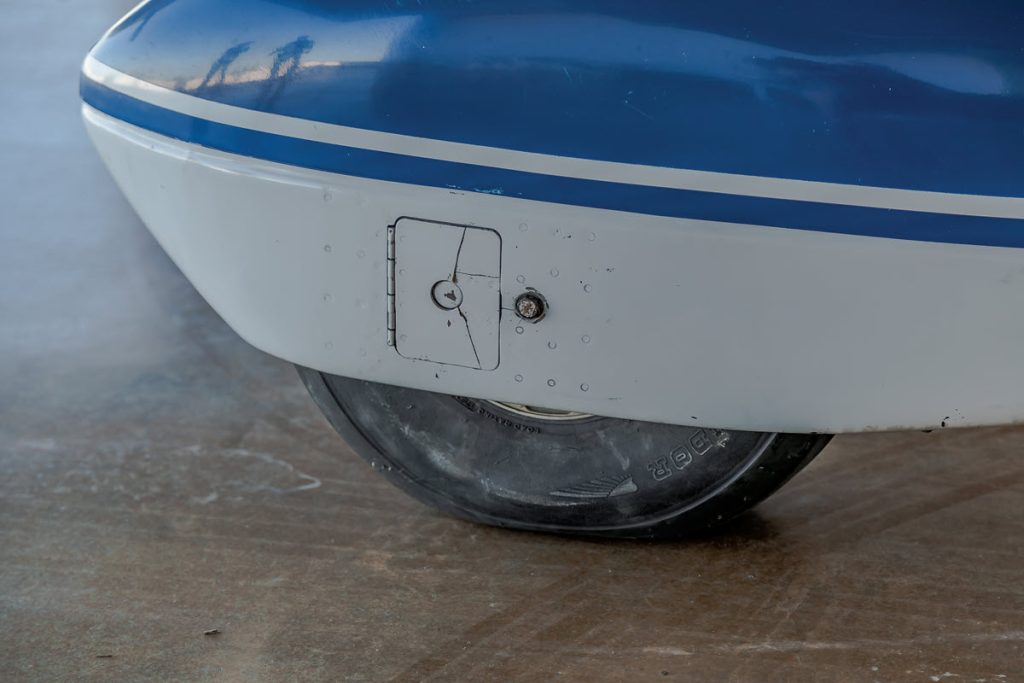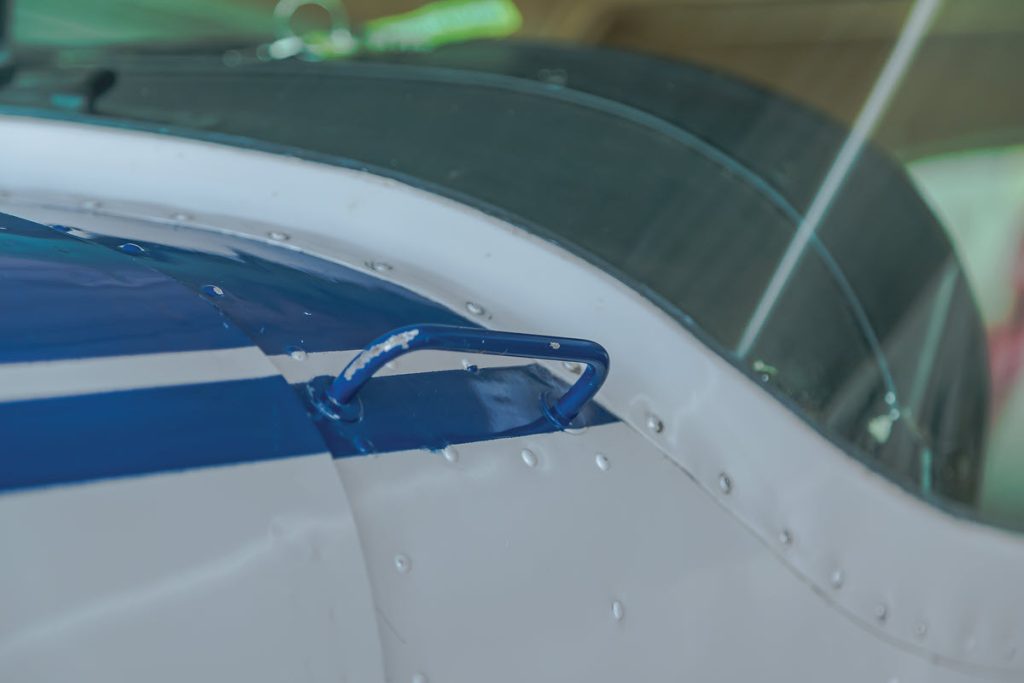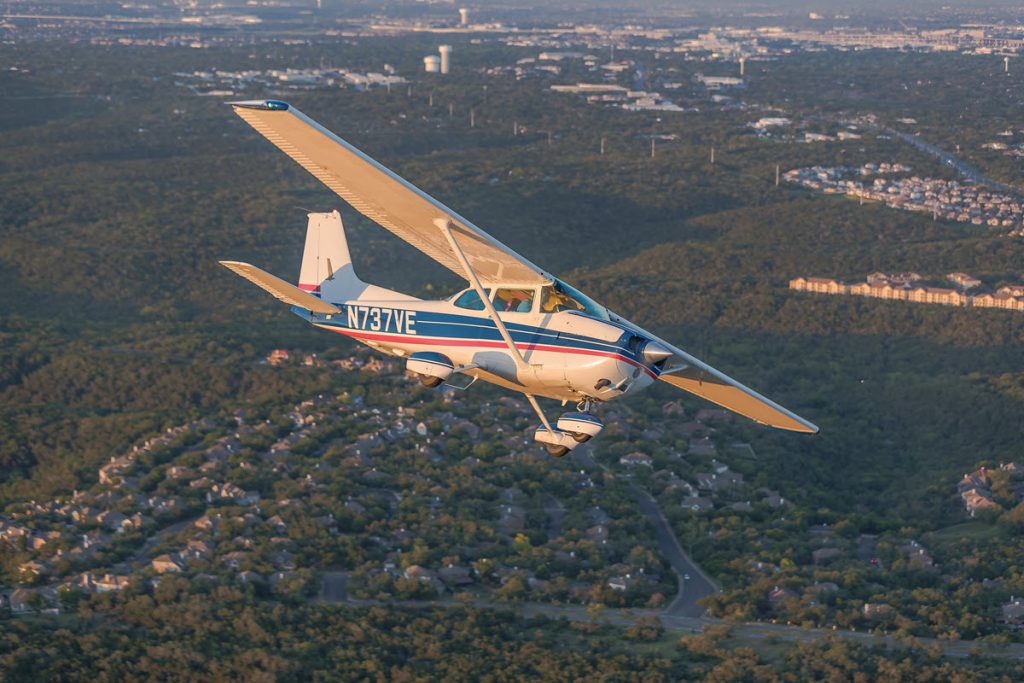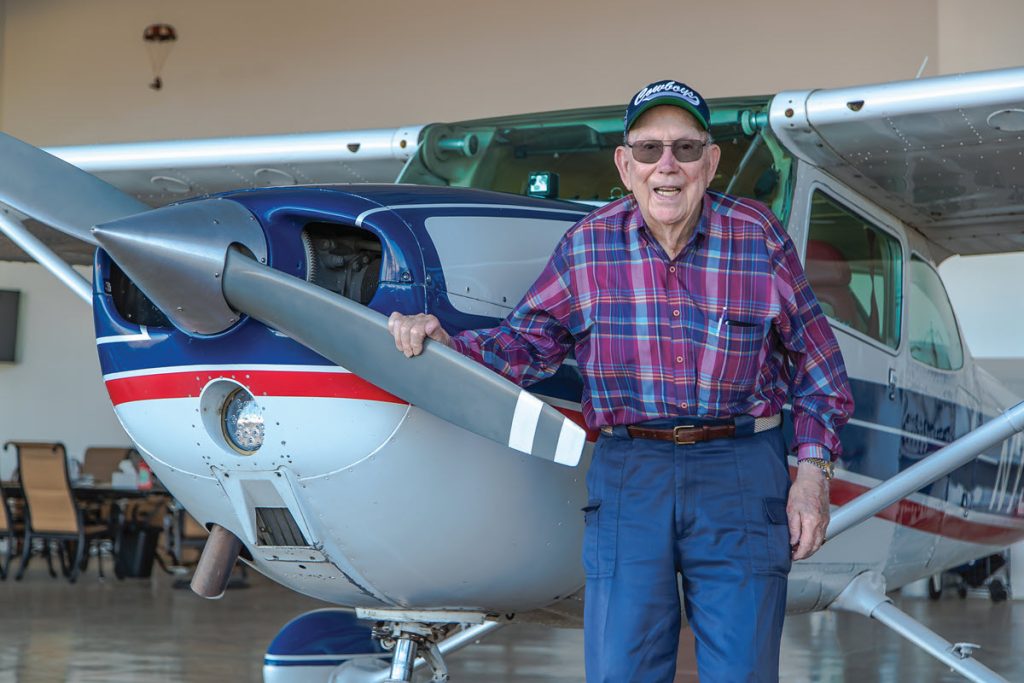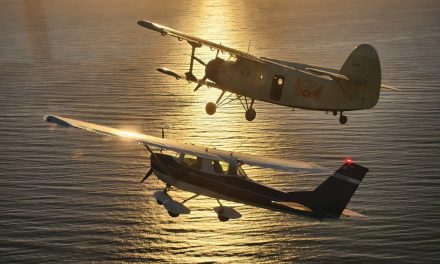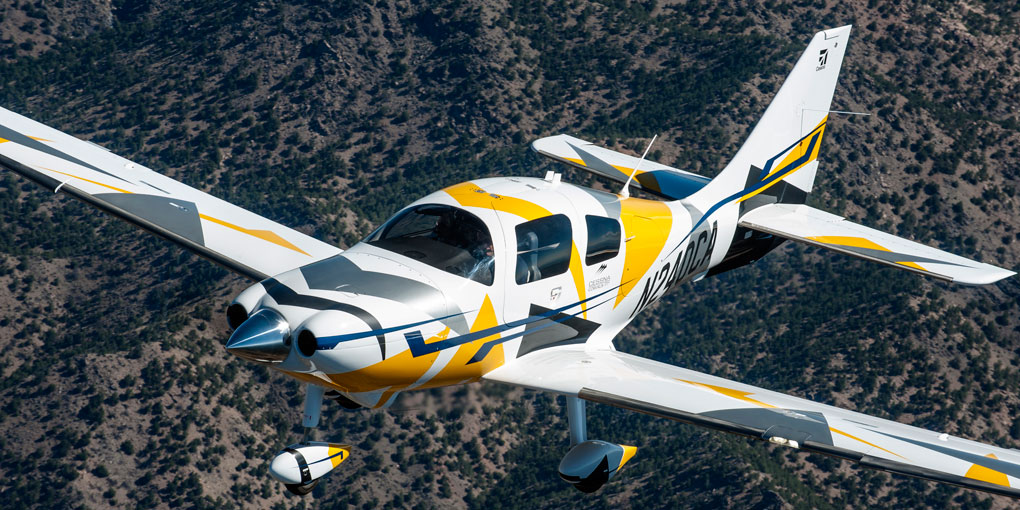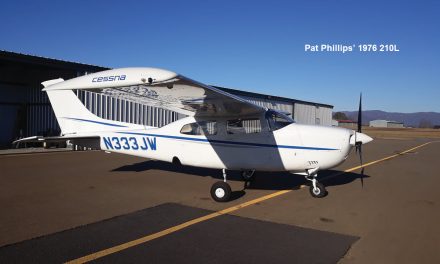By Stephanie Finnegan
A Skyhawk with 180 hp Upgrade
On the TV comedy series Frasier, Kelsey Grammer’s character comes to a profound and surprising conclusion. When he’s asked to produce the musical score for a documentary, he begins to see how many options and possibilities exist, and exclaims to his brother, Niles, “If less is more, think how much more, more would be!”
That notion of taking something that already is top-notch and well-regarded, and then upscaling it into something even more laudable and admirable underscores the transformation of N737VE. It began life as a 1978 Cessna 172N and has had upgrades that have made it even more reliable, sturdy, and enviable. As the legendary actress and author Mae West once purred, “Too much of a good thing can be wonderful.”
Simplicity, Reliability, and Accessibility
N737VE began its life like all of the other Cessna birds; it was a stellar representation of what the company does best, blending reliability and accessibility. “Mr. Cessna built a great airplane — it’s hard to complain at all about the simplicity, flying characteristics, and value of any of the 172 aircraft,” said Glenn Chiappe, proprietor of PlanePlace.
Glenn is the pilot who assisted plane owner Rex Womble in purchasing the Cessna. “Rex is in his 80s, but he still loves to fly — although one of his pilot friends usually accompanies him. I helped to find and buy the airplane about five to six years ago. It is a really nicely preserved example of a 172N. It is the first year — 1978 — with the 24v electrical system. This one had a recent SuperHawk conversion on it (180 hp fixed pitch, with gross weight increase), strobes, and other desirable options.”
The additional features are a “What’s What” in aviation makeovers. The add-ons took a great plane and made it a conversation-starter. “It had rudder trim, hardly ever found on a 172, and long-range tanks (54 gallons). The plane was also super-equipped with an S-TEC autopilot, Garmin 530W, engine monitor, HSI, and even an AOA instrument!”
As if that weren’t enough, it also boasted renovations to the plane’s seating. “The owner had updated the pilot and copilot seats to seats out of a late-model 172 SP and added a BRS parachute system!”
Customizing for the Owner’s Needs
“Rex is a neighbor and a friend,” Glenn explained. “He is a longtime pilot and has owned Maule, Mooney, Bonanza, Sport Cruzer, and this 172N SuperHawk. I went to Kentucky to bring it back to Lago Vista, Texas, where it lives in Rex’s hangar.”
Like anyone who has purchased a plane knows, no matter how it arrives, there are always opportunities to add, subtract, and multiply its features. Glenn worked closely in customizing the plane for Rex’s requirements: “As noted, many of the mods were there when we bought it — but I did the coordination to remove the weather radar pod from under the wing, upgrade the panel, and eliminate the radar altimeter. This thing is a unicorn! The original paint is still very nice. We updated the instrument panel to eliminate the Cessna plastic overlay and make a nice layout.”
Because of his connection to Rex and his familiarity with the 172N models, Glenn is more than just a hired pilot who flies this craft. He has a deep admiration for the owner and true respect for the Skyhawk: “I basically fly it for Rex. I am the named pilot, anyway. Call me a caretaker of the airplane!”
1978 Cessna 172N Skyhawk
These are the specs for a standard 1978 Cessna 172N Skyhawk (without the SuperHawk upgrade). Every vintage airplane is now different; do not use these specs to plan a flight. All data taken from the Standard Catalog of Cessna Single-Engine Aircraft (JP Media LLC).
| Engine | Lycoming O-320-H2AD |
| Horsepower | 160 |
| Top Speed | 144 mph (125kts) |
| Cruise Speed (economy) | 108 mph (94 kts) |
| Fuel Capacity | 43 gal |
| Range | 575 nm (@Economy Cruise) |
| Gross Weight | 2,300 lbs |
| Empty Weight | 1,393 lbs |
| Avg. Useful Load | 907 lbs |
| Takeoff Ground Roll | 805 feet |
| Takeoff Over 50 ft Obstacle | 1,440 feet |
| Landing Ground Roll | 520 feet |
| Landing over 50 ft Obstacle | 1,250 feet |
| Rate of Climb | 770 fpm |
| Service Ceiling | 14,200 feet |
| Doors | 2 |
| Seats | 4 |
| Electrical | 28v |
| Dimensions (approx.) | |
| Cabin Width (at shoulder) | 39.5 inches |
| Length | 26 feet, 11 inches |
| Height | 8 feet, 9.5 inches |
| Wingspan | 36 feet |
Knowing the Skyhawk Inside Out
When Rex was contemplating purchasing the converted, upgraded N737VE, he had a fantastic wingman/adviser with Glenn. The former technical salesman is now a commercial, CFI/CFII/MEI contract pilot. He has a familiarity with and a keen understanding of many different planes.
“I own a 1957 C172 and a Beech A36 Bonanza — I keep and fly, regularly, TBM7/8/9, Cessna 340, King Air 90/200/250, Beech Premier, Cirrus SR 22, Xtreme Decathlon, Citabria, Cub, and 182. You name it, and I have one nearby that needs to be flown.”
With such a sweeping knowledge of different aircraft, Glenn was the ideal person to offer his expertise and experience to Rex. “I had owned a 1977 172N when I helped Rex buy his. Mine was N733ZE — an original, low-time 172 that had the H2AD engine, which for us was not a bad powerplant at all.”
Since he had piloted a 172N himself, Glenn knew the upside and the downside of the Skyhawk. He had personal experience with what made the plane a good choice for leisure flying and what could be stepped up in its makeup. “The Skyhawk is the golden retriever of airplanes. It’s just as gentle and sweet as they come. The bigger engine of the SuperHawk conversion just makes it perform better on those hot days and higher altitudes.”
A Beefed-Up Engine
When the 1978 172N rolled out of the factory, it had a 160 hp O-320 H2AD Lycoming engine and a McCauley fixed-pitch prop. “Nice airplane, but everyone wants to add more power,” Glenn shared. “This airplane had a ‘factory new’ engine, so when the upgrade was done, the prior owner bought new. I was not around for this, but the cost of the engine alone can be $50,000 plus installation, ancillary parts, and the STC. Penn Yan gets their part, too, as they got the upgrade approved by the FAA.”
Regarding the Penn Yan improvements, Glenn detailed the behind-the-tarmac alterations: “Penn Yan Aero has an STC to install a Lycoming O-360 engine of 180 hp, and a Sensenich fixed-pitch prop of a larger diameter. The STC also extends the gross weight of the aircraft from 2,300 pounds to 2,550 pounds.”
Since the upgraded SuperHawk Skyhawk now has a larger, more powerful engine, it performs much better than the stock airplane. “Because the bigger engine burns a bit more fuel per hour than the standard engine, it’s especially helpful to have the new long-range fuel tanks. This adds about an hour of more fuel to a flight,” Glenn stated. “In fact, the fuel tanks were a factory option — kind of rare for a 172. I’d bet about 10% or fewer of the N models had the long-range tanks.”
Parachute Pros and Cons
One of the upgrades that came with Rex’s purchase of N737VE was a ballistic recovery system (BRS) chute. The inclusion of this safety measure has left him and Glenn, as well as many other pilots, up in the air about its purpose and necessity.
“It is a onetime, impossible-to-save-the-aircraft measure,” Glenn said. “I cannot imagine the circumstance where I would use it. Maybe engine failure over the mountains at night? But it makes some family members feel better to know that the airplane is equipped with it — should something bad happen, like airframe failure, incapacitated pilot, or who knows what else?”
Since he is an active, skilled pilot who logs many hours in the cockpit, Glenn has a pragmatic viewpoint on this feature. “The BRS is made by the same people that make the one for the Cirrus family of aircraft. Cirrus has made BRS into one of the key features of all of their planes. I think nonpilots are more in favor of it than pilots. Pilots, after all, are taught to glide the aircraft to safety in the event of a power failure. That is actually one of the more likely scenarios for its use. Or, maybe, the airplane might become unflyable due to an air-to-air collision, or some other extraordinary event.
“This is a debate that will go on for a long time. Personally, I don’t like it. The BRS takes up baggage space and adds weight to the plane. Rex’s family, though, was happy to have it in his airplane.” For many passengers, it adds an extra layer of security and gives them peace of mind. It’s a bonus accessory that the owner, pilot, and passengers hope never to see utilized. Everyone can agree on that!
A Bird’s-Eye View
Having piloted so many different makes and models of aircraft, Glenn is able to speak forthrightly about Rex’s upgraded SuperHawk. “The airplane will true out at 122 knots and right at 10 gallons per hour rich of peak (ROP). The 180 hp upgrade is very nice. It eliminates the old H2AD engine and really adds some nice climb and cruise performance increases. The useful load is around 930 pounds — so that 250-pound gross weight increase was very helpful — 2,300 to 2,550 as a SuperHawk.”
Since he pilots the SuperHawk for Rex and had owned his own unmodified 172N, Glenn is an advocate for this Cessna craft. “It is a very popular airframe — built from 1956 to present day. It’s easy to fly and easy to maintain. The N model is the iconic standard of the 172 line, with six-pack instruments, center stack radios, and electric flaps. It is what the pilot textbooks are written about.”
Skyhawks Are Special
“It is a blessing to get to fly so many aircraft. I have been able to gain experience over a 40-plus-year flying career. And now, I try to pay it forward,” Glenn remarked. “I give lots of rides for young people; I do flight reviews and IPCs — new aircraft checkouts for new owners. I try to take a young pilot with me in the bigger airplanes for ride-alongs; this way I can get them some experience in their logbooks.”
The 172N stock model has factored in Glenn’s family flying time as well. “I trained both my kids to fly in my Cessna, N733ZE. The 172 is the perfect trainer — absolutely perfect.” Proud papa Glenn said, “My daughter, Lauren, is a licensed pilot, and my son, GR, is post-solo on his training.” Hailing from a full-fledged flying family (his dad and his brother are both pilots and have been involved with aircraft parts manufacturing), Glenn knows that aviation is part of his personal and professional heritage. “Even my mom has 40 hours in her logbook as well!”
Having such a rich history in the pilot’s seat, especially for so many plane configurations, Glenn can speak honestly about why the Cessna Skyhawk and the souped-up SuperHawk are top-notch purchases: “The Cessna Skyhawk is an excellent trainer or first airplane to own. If you don’t buy one, you can always rent one. You will definitely enjoy flying it. Rex’s SuperHawk is a pure leisure plane, and I’ve flown jets to Cubs — Rex’s SuperHawk is a great plane.”
For more information about the SuperHawk conversion, Glenn Chiappe suggests visiting the Penn Yan Aero website at pennyanaero.com/superHawkPage.php.
Select a photo to open a pop-up slide show
